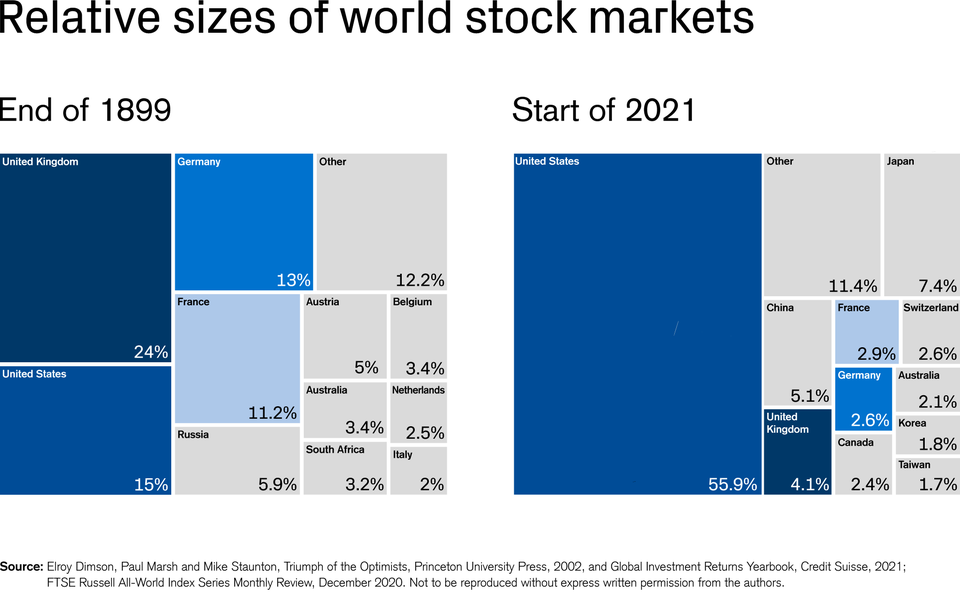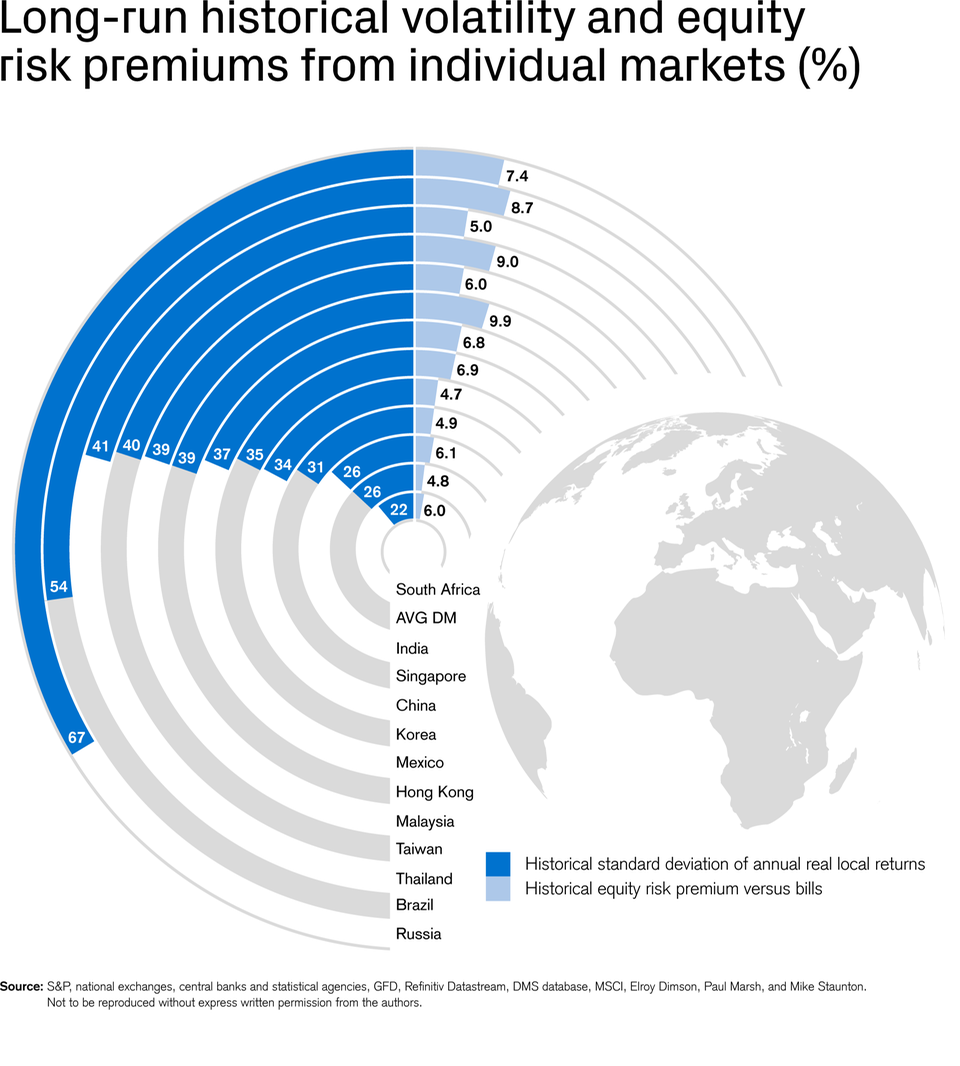Investors had to lose their money due to the stock market crash last year. It was a difficult period for everyone, including investors.
Not just in India, investors across the world had to face a tough time. A short-term focus on current perceptions and market sentiment can seriously detract from investment performance. Those who follow the herd are destined to sell after markets have fallen and to buy after a rise.
The Credit Suisse Global Investment Returns Yearbook documents and analyzes global investment returns over the last 121 years since 1900. Its aim is to use financial history to shed light on the issues facing investors today. As Winston Churchill said, “The longer you can look back, the farther you can look forward.”
Why invest in emerging markets?
As recently as 20 years ago, EMs made up less than 3% of world equity market capitalization and 24% of GDP. Today, they comprise 14% of the free-float investable universe of world equities and 43% of GDP.

The weightings of today’s EMs are likely to rise steadily as the developing world continues to grow faster than the developed world. EMs are now mainstream investments with a key role and an essential position in global portfolios. They are already too important to ignore, added the report.
Emerging markets volatility
Emerging markets tend to be rather volatile. This pattern can be partially explained by major events such as revolutions, wars and crises.
Only South Africa was less volatile than the average DM. Ten countries displayed volatility above 30%, while Brazil (54%) and Russia (67%) had exceptionally high volatility reflecting periods of historical hyperinflation.

Promise and disappointment
Advocates of EMs stress two attractions: The potential for risk reduction through diversification and the prospect of superior economic growth, with the vision of markets following the same path, the Credit Suisse report points out.
While EMs do indeed offer rich diversification opportunities, the growth story has proved less robust. The comparative performance of emerging and developed-market (DM) equities is highly variable over time. Over the last decade, EMs underperformed; since 2000, they outperformed; since 1900, the picture is mixed.
The risks versus the gains
Investors should not be deterred from investing in EMs because of risk. The risk of individual EMs has fallen dramatically over the last 20 years and the gap between the average risk of EMs versus DMs has shrunk substantially, the report added.
Indeed, over the most recent five-year period, the annualized volatility of a diversified portfolio of EMs was only a little above that of a diversified portfolio of DMs. Furthermore, EMs still offer important diversification benefits for DM investors. For EM-based investors, the benefits of spreading investments across their home markets, as well as other EMs and DMs are even greater.
Because emerging markets have gained an essential position in global portfolios, this year’s Global Investment Returns Yearbook is enriched with data from nine new countries, most of which are EMs.




